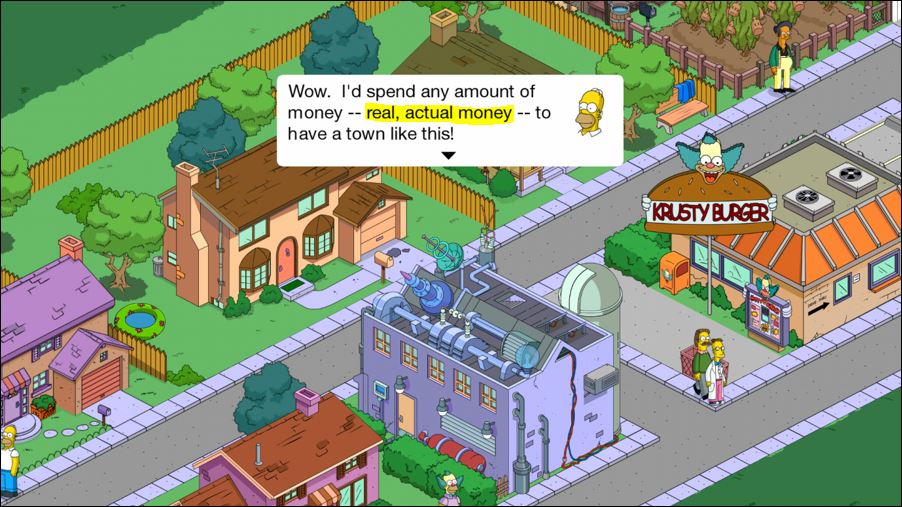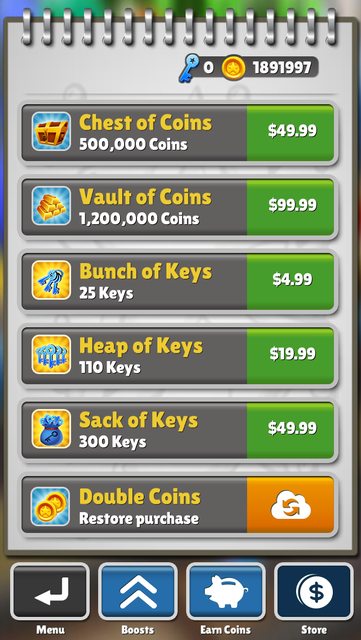Mobile applications and the main factors of freemium monetization. Part 1

Developers, individuals and entire corporations, create thousands of applications every day. Naturally, program makers want to get something for their work, and the best way to make money in this case is to monetize the application. Now, the most active thing for monetization is using the freemium model or advertising, and not the sale of the application itself.
So, more than 80% of mobile applications that are in the list of 1000 most popular programs are monetized using the freemium scheme (more about this you can find here ). However, there are some ways to increase the income from this method of monetization. In continuation, we propose to use some such methods that we consider most successful. As an example, consider a few popular games that use the freemium scheme.
Information support for in-game purchases
Of course, a good game or application that the user likes can bring a good income due to freemium. And many users are willing to pay for in-game (as an example, take just the game) applications. But the problem is that there are not many people among users who are able to immediately understand what and how to buy. Moreover, the method of purchasing goods can be very simple, but for some reason the user will not pay attention to the possibility of buying something.
')
In order to improve the monetization of the application, it is worth telling the user how to buy something inside the game, and also why to make such a purchase. It is best to do something like a training level (s) where it will be shown what, how and where you need to buy.

It turns out that applications in which there are similar tutorials (training) bring in about two times more money than similar applications in popularity without training materials for users. In addition, applications with a tutorial on the purchase of goods demonstrate a high percentage of users who buy something again and again.
We offer options
This is a fairly common way to offer the user to buy something, and the user has the freedom to choose. At the same time, you should not offer too many choices - because the user wants to play, and not to choose a product, as in the market. The most effective is the option with 2-5 sentences.

Clarity in everything
So that users willingly repeat purchases, it is worth showing in detail what exactly the purchase of this particular product will bring and how much it costs. If you start to darken, then there will be more purchases, if at all. Why is it more profitable for the user to purchase goods for $ 5, and not for 5 cents? This should be as clear to the user / player as day. In the same Subway Serfers all purchases are exhibited in a very clear way. And this applies to both purchases for real money and the purchase of goods for in-game currency.

Here comes the purchase for real money.

Here in-game currency is used.
Naturally, the player always wants to save money, and choose what is cheaper. That is why you need to show what the user can get for their money.
And here you can use the system of discounts, which should also be explicit. If the user buys a lot of goods / game currency, he should see that the discount will be big.

Easy to get out, easy to get back.
Analytics for many games shows that the majority of repeated in-game purchases are made within an hour after making the first purchase. And since the gaming session rarely lasts more than 8-10 minutes, it is clear that purchases are made already in new sessions / levels.
Therefore, it is critical to ensure that the player returns easily to the application, for example, after completing the level or the gameplay itself (for example, the user has died several times and the game must be started over).
A perfect example of such an easy return is Flappy Birds. The player starts a new game, failing, immediately after clicking on the button to continue the game.

In principle, there are other factors, but above are the main, most important. After a while, we are going to publish the second part of the article, but for now I would like to hear from colleagues who and how monetize their mobile apps, and what factors do you think are the most important in this regard.
Source: https://habr.com/ru/post/260089/
All Articles